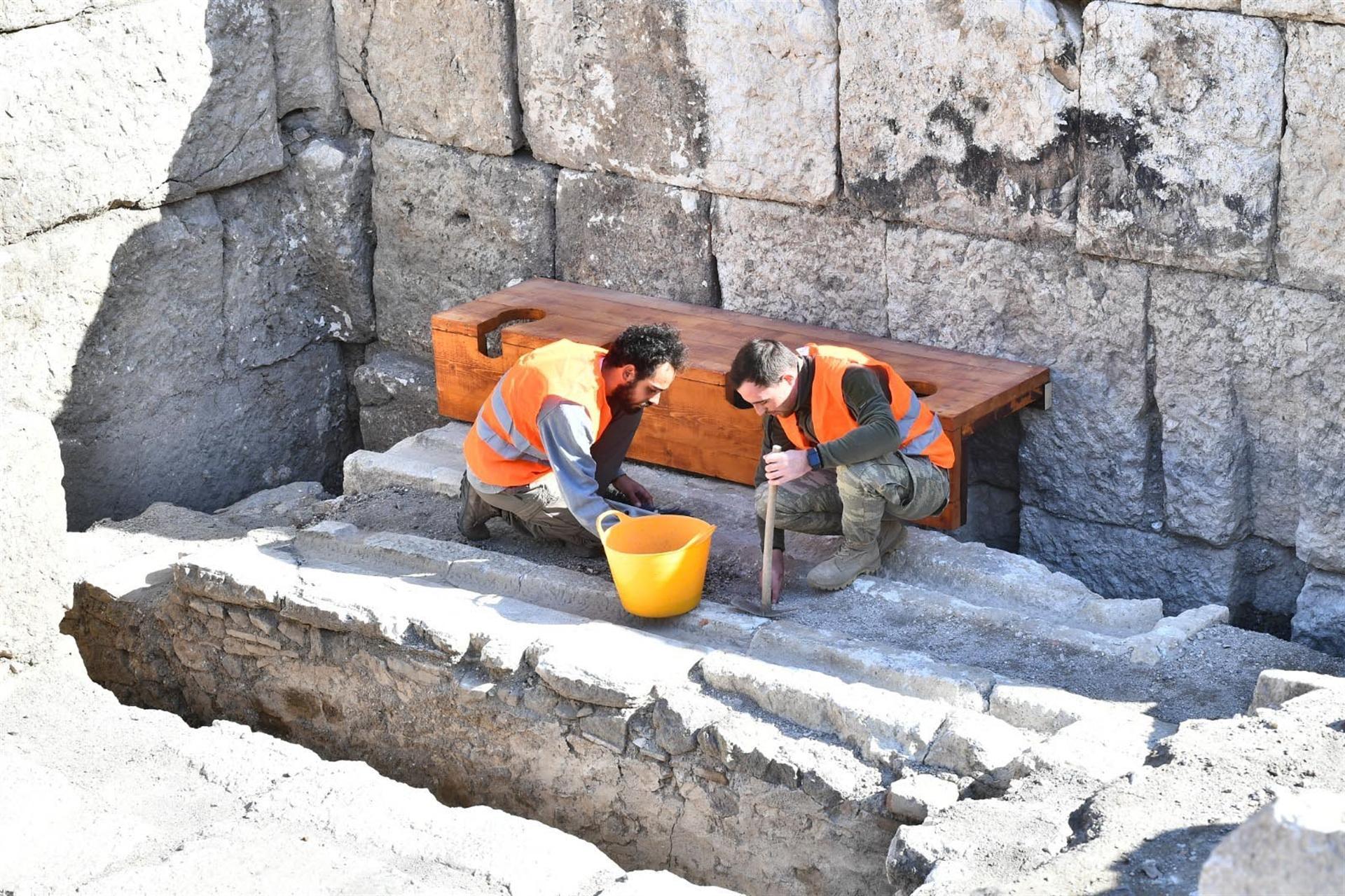
A latrine (toilet) believed to have been used by artists has been found in the theater of the ancient city of Smyrna, where excavations have been ongoing for five years in İzmir.
Akın Ersoy, the head of the Smyrna excavations and associate professor from İzmir Katip Çelebi University’s Turkish-Islamic Archaeology Department, said that for the first time in the Mediterranean, they witnessed that a place in a theater stage building was used as a toilet.
The findings obtained during the excavations carried out in the 2,400-year-old ancient city of Smyrna, located on the slope of the Kadifekale district of İzmir, shed light on the social and cultural life of the period.
The ancient city was covered with soil 1,500 years ago, and excavations continue with the support of the Izmir Metropolitan Municipality to unearth it. The latrine was found in the city’s theater, which has a capacity of 20,000 people.
Ersoy said that they came across unexpected finds during the works, which made them were very excited. “There are latrines that serve the audience near the theaters we know, but it is a first for such a place to be used as a toilet in the stage building of the theater,” he said.
Speaking about the features of the latrine they found, Ersoy said: “It is a toilet with a U-shaped seating arrangement, as we see more often in Anatolia, that 12 to 13 people can use together. The use of this toilet space by a large number of people also brought socialization. We think it was used only by artists working in the stage building and performing in the theater, as the stage building is closed to the audience. Since it is located in a closed area, it is possible to consider it an ‘artist toilet.’ This is a first among theaters in the Mediterranean region.”
Stating that the history of the theater dates back to the second century B.C. and that the latrine was built during the major changes made in the theater in the second century A.D., Ersoy added that the latrine and theater were used until the fifth century A.D.
The latrine is approximately 40 centimeters high and has a structure where people can sit side by side at intervals of 60 to 70 centimeters.
In front of the bench, there is a U-shaped trough with a depth of 8-10 centimeters, with clean water constantly flowing at ground level. The constantly flowing clean water trough allows people to be cleaned with the help of a sponge attached to the stick. Seating benches are mostly wooden, as in the case of Smyrna. Toilet holes are in the form of a key lock.